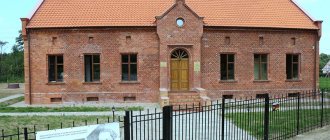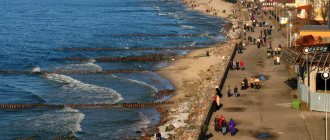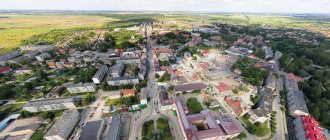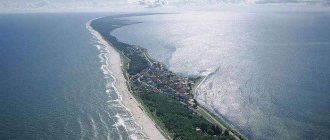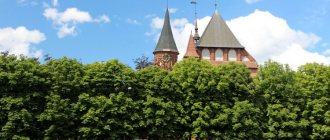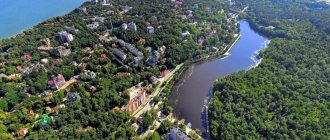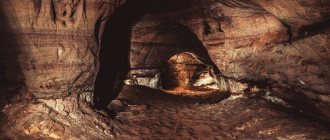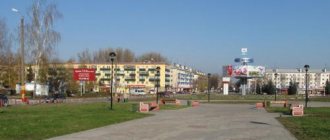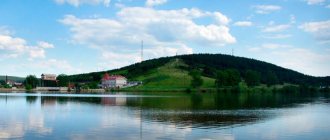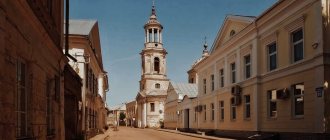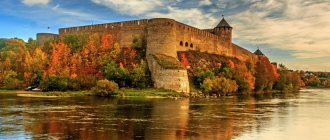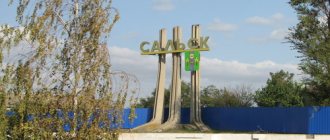Gvardeysk: TOP-3 things to see in 1 day
Among the countless attractions of Gvardeysk, there are places that the townspeople call symbols of their small homeland.
Tapiau Castle
- Address: st. Dzerzhinsky, 12.
The castle was founded in the second half of the 13th century. After the seizure of the territory by the Teutons in 1265, the wooden-earth fortress was rebuilt, and in 1280 the castle itself underwent reconstruction. The Teutons expanded it and strengthened it. In subsequent centuries, the complex changed its purpose several times. It served as a prison for political criminals and a shelter for the poor.
The castle suffered serious damage during the First World War and lay in ruins until, in 1945, Soviet troops entered Tapiau and rebuilt it into a pre-trial detention center. This was the first restoration since the time of Frederick William III.
Later, the castle again worked as a prison, which it remained until 2022. Currently, the ancient complex has been transferred to the Kaliningrad Historical and Art Museum. Most of the fortress's buildings did not survive until the 21st century. Today, only the rebuilt northwestern wing can be seen on the castle grounds, as well as part of the underground tunnel system.
Monument to Russian soldiers of four wars
- Address: Victory Square.
In 2015, a monument was erected on Victory Square in Gvardeysk, uniting soldiers of the Seven Years, Russian-Prussian-French, First World War and Great Patriotic War.
The monument is a tetrahedral stele. At the base of each face there are orders, mourning ribbons and strips with the names of wars. At some distance to the right and left of the stele there are stone slabs with the names of soldiers who died during the First World War.
In December 2022, the memorial was supplemented by a commemorative plaque in honor of the capture of Tapiau by Russian cavalry under the command of Major General Karl Karlovich Sievers in 1813.
Monument to Vasily Terkin
- Address: st. Telmana, 7.
The sculpture of everyone’s favorite character appeared in Gvardeysk for a reason. It is here that A.T. Tvardovsky finished the last chapters of the famous poem about this soldier. Readers were attracted by Tvardovsky's simplicity and wit, as well as the complete absence of communist propaganda and the Stalinist cult, which were found in almost all works of that era.
The sculpture is made of bronze and installed at the entrance to the library named after. A.T. Tvardovsky. Vasily sits on a bench and plays the harmonica. It is interesting that the library stores the “Birth Certificate of V.A. Tyorkin." This is a real document issued by the Civil Registry Office. The poem was completed exactly on May 9, 1945, so this day became the date of Vasily’s birth, and his patronymic was given by the name of the author.
Story
14th century Teutonic Order castle
Peter of Doesburg wrote about the settlement known as Tapiow
, first documented in 1254, and the nearby
Surgurbi
built by 1265.[2]
In Old Prussian the names were derived from the words Lenta
,
Teplu
,
Toplu
,
Tapi
, meaning "warm", and
Sur Garbis
, meaning "around the mountain". During the 13th century Prussian Crusade, the territory was conquered by the Teutonic Knights. To defend Samland from the Nadruvians and Scalvians, the crusaders built a wooden fort between the Deime and the Pregel River in 1283–1290. This was replaced by Tapiau Castle, Ordensburg stone, in 1351.
The settlement gradually became known to the German Crusaders as Tapiau
.
Vytautas, later Grand Duke of Lithuania, was baptized in Tapiau in 1385. At the request of the anti-Teutonic Prussian Confederation in 1454, Polish King Casimir IV Jagiellon incorporated the region and city into the Kingdom of Poland[11] and the Thirteen Years' War broke out. After the defeat of the Teutonic Knights in the war in 1466, the city became part of Poland as an estate held by the Teutonic Knights.[12] After the transfer of the Grand Master's seat from Malbork to Königsberg, Tapiau became the location of the archives and library of the Order from 1469 to 1722. 16th-century depiction of Tapiau
Tapiau became part of the Duchy of Prussia, a vassal state of Poland, in 1525. Tapiau Castle was often used as the second residence of the Prussian dukes; Albert of Prussia died in 1568. It became part of the Kingdom of Prussia in 1701, receiving city privileges from King Frederick William I of Prussia in 1722[ citation needed
] It became part of the newly created Prussian province of East Prussia in 1773 and was governed by the Landkreis Wehlau (1818–1945). Tapiau became part of the German Empire during the unification of Germany in 1871.
In August 1939, the Germans imprisoned the director, teachers, other staff and 162 students of the Polish school. gymnasium in Kwidzyn in the city.[13] They were kept in a former psychiatric hospital. In September 1939, during the German invasion of Poland, which began World War II, it was converted into a prison camp for Polish prisoners of war, and Polish teachers and youth were deported to other places.[14] Later, graduates under 18 were released, and high school students were forcibly drafted into the army. Wehrmacht, and teachers and staff were deported to Nazi concentration camps,[14] where most of them were killed.[15] There was also a Nazi prison for women in the city.[16]
Unlike most other cities in northern East Prussia, Tapiau suffered little damage during World War II. After the end of the war in 1945, it was annexed by the Soviet Union and renamed Gvardeysk ("guard town") in 1946.[17] The city's German population of over 9,000 fled or was killed during the war, and those who remained after the war were expelled and gradually replaced by Soviet residents.
Which museums in Gvardeysk should you go to?
In museums, the history of Gvardeysk is presented in all its glory, with all the details. Tourists can expect an exciting journey through the ancient and modern times of this city.
Museum of History and Culture of the Guards Urban District
- Address: st. Telmana, 6.
The museum was opened in 2001 in Tapiau Town Hall, which was built in 1922. It is located in a busy part of the city and in the past served as an administrative center. The building is designed in eclectic style.
The entrance is through a projection with an arched portal and a staircase decorated with cannonballs. The risalit ends with a stepped gable, in the center of which there is a tower clock. It was these clocks that brought fame and popularity to the town hall.
They were launched the year the building was built and have never fallen behind since. In 2015, the mechanism was equipped with “singing dolls”, which appear from niches three times a day, spin and perform a melody.
Now the museum fund consists of more than 600 storage units. Four permanent exhibitions are open in the exhibition halls:
- "History of the Gvardeysky district and region." In this section, tourists will learn about the formation of the city, starting with the emergence of the ancient fortress. Among the exhibits are knightly armor, weapons, household items and jewelry from burials.
- "Artists born in Tapiau". Tapiau/Gvardeisk nurtured two German artists: Lovis Corinth (the famous impressionist) and the landscape painter Ernst Molenhauer. In the art gallery, tourists will see their best works.
- "Wars of East Prussia". Tapiau's page of glory, telling about the military exploits performed by the city's residents at different times. The exhibition features documents, photographs and weapons.
- "The first Soviet settlers of Gvardeysk." In this section, tourists will find a story about how the East Prussian city of Tapiau became part of a communist country.
The museum is located on the first floor of the town hall, and the second floor is occupied by the children's and youth center. Members of creative teams organize temporary exhibitions dedicated to Russian life, fine arts and pottery.
Museum of Military Equipment
- Address: Krasnoarmeyskaya street.
On February 23, 2022, the festive event “Life in the Name of the Fatherland” was held in Gvardeysk.
The highlight of the celebration was the opening of the military equipment museum, located on the square in front of the House of Culture. The exhibition was based on 183 samples of anti-aircraft weapons from different times. Among them are the air defense S-300, S-125 and the famous air defense S-75. It was the S-75 that fired a missile in 1959, becoming the first anti-aircraft system to destroy a combat aircraft.
In the future, the open-air museum's exposition will be replenished. Fighters and battleships will appear here.
Coat of arms of the city of Gvardeysk
Date of adoption: 11/23/2001The coat of arms is registered in the State Heraldic Register of the Russian Federation under No. 894.
State Register of the Russian Federation: No. 894
Heraldic description:
In an azure (blue, light blue) field there is a golden sun emerging at the top (without an image of a face), and below and on the sides there is a silver cloud forming an abstract border.
At the extremity, a hand of natural color emerges from the clouds to the right, holding a silver sword in a pillar, the tip of which is superimposed on the sun . The shield is crowned with a municipal crown of dignity of the established pattern
Rationale for symbolism:
This coat of arms is one of the oldest heraldic signs in the Kaliningrad region. It served as a symbol for all settlements on the site of Gvardeysk. His image appears in the XIII-XIV centuries. on the seal of the knight's castle Tapiov (from the ancient Prussian name of this area). To this day, this medieval giant towers over the river floodplain and the entire surrounding area; for seven and a half centuries its walls have been washed by the Deima and Pregolya rivers. The castle is the city-forming center of the city. Under the protection of its walls it appears in the 13th century. first a village, and then, from 1772, the city of Tapiau - the current Russian Gvardeysk. In 1628, already on the seal of the court of the village of Tapiau, an image of a sword stretched out to the sun appeared; in 1722, by royal decree, Tapiau was granted city rights and a coat of arms with the same image. The ancient coat of arms belonging to the city of Gvardeysk depicts the external drawing of the great hidden truth. Thanks to its splendor and proud majestic beauty, it immediately bestows us with the powerful positive energy emanating from it; this coat of arms combines the golden heat of the flaming sun, the silver frost of the heavenly cloud and the steel cold of naked metal. In heraldry, the radiant sun is a symbol of beauty, wealth and abundance. Winding lines are flames, the heat of the sun, straight lines are light. For many millennia, the sun was the main symbolic sign for the peoples of the Earth, meaning space, deity, and the source of life. The most ancient solar symbol of the primitive world is a fiery wheel on a pole. This is reflected in the rituals, folklore and folk art of many nations. For example, in Russia, on Maslenitsa, in connection with the approaching spring, a wheel (sun) was put on a pole stuck in the middle of a fire. In the image of the sword and sun of our coat of arms one can clearly discern the same folklore wheel of fire. The radiant disk of the sun in the Christian figurative world is associated with the concept of God.
Coat of arms of Gvardeysky district 2001
The right hand of heaven - the hand of the Savior - gives us a sword: “... take also the sword of the Spirit, which is the word of God (says in the Epistle of St. Apostle Paul to the Ephesians 6:10-1) ... with this weapon serve the Lord. So that you may be able to withstand in the evil day and, having overcome everything, to stand..." "Weapons" as a symbol "represent the expression of the will directed towards a specific goal" (Jung). In the coat of arms of the city of Gvardeysk, this is a means of serving the higher law. Always adhere to the truisms and eternal truths of this law, “and having overcome everything,” you will stand. The sword is a symbol of power and justice, a symbol of vitality. The sword is a readiness to defend, it is courage, heroism, anger. Steel is strength of spirit. Traditionally in heraldry, a sword facing straight and upward is a sign of memory of the fallen, exploits and heroes. The right hand of heaven with a sword facing the sun is a wonderful coat of arms for the city with the heroic name of Gvardeysk.
The author of the reconstruction and text of the symbolism of the coat of arms is G. Lerman (Gvardeysk); heraldic revision - K. Mochenov (Khimki); artist - N. Sakhnov (Gvardeysk); computer design - S. Isaev (Moscow).
Approved
By decision of the Council of Deputies of the Gvardeysky District dated November 23, 2001 No. 109
, the historical coat of arms of the city of Tapiau was restored
the coat of arms of the Gvardeysky District Since 2014 - the coat of arms of the Gvardeysky urban district
, re-approved by the Decision of the Council of Deputies of the Gvardeysky urban district dated September 21, 2022 No. 239 (the possibility of using a coat of arms with a crown was added).
VECTOR IMAGES:
»» Gvardeysk (Kaliningrad region), coat of arms (2001)
»» Gvardeysk (Kaliningrad region), full coat of arms (2017)
Ancient architecture of Gvardeysk for photos
The unique appearance of Gvardeysk is created by buildings preserved from the time of Tapiau. Walking around the city is always slow, as you want to linger at each building and admire its ancient beauty.
Water tower
- Address: Karl Marx street.
There are several water towers in Gvardeysk. The most impressive of them was built in 1920 on Danziger Strasse.
Despite its relative youth, the tower resembles a structure from medieval Prussia. It is made of stone and covered with a tiled tent. The composition is completed by a miniature spire with a dome. Inside, a spiral staircase stretches to the upper floors. Some time ago it was planned to open an observation deck at the top of the tower, but the condition of the building made this impossible.
The stern appearance of the tower has long attracted the attention of not only tourists, but also artists. It can be seen in Mollenhauer's paintings.
Building of the Interdistrict Department of Private Security
- Address: st. Gagarina, 10.
The interdistrict department of private security occupies a luxurious 19th-century mansion. The stone building has two floors and a mezzanine. The façade of the landmark is decorated with a stucco frieze, the same sandstones and a wrought-iron balcony. The sculptural turrets on the mezzanine add a special touch.
In 2017-2020 The building was undergoing restoration. During the work, the interior decoration was restored, the facade was decorated with fresh paint, and the decorative elements shone white. Before this, the building had the gloomy appearance of a haunted house. Now it is a pearl of urban architecture.
Public School Building
- Address: st. Kaliningradskaya, 16.
The public school was founded at the beginning of the 20th century. It was housed in a brick building decorated with pointed tongs. The doorways are made like arches and decorated with archivolts.
In 1945, the Folk School was replaced by a seven-year school, later a secondary education institution. Nowadays there is school No. 1 here. Despite being a hundred years old, the building is in excellent condition. Children study in bright classrooms with high ceilings.
House of the artist Lovis Corinth
- Address: Vodnaya st., 12.
An outstanding German artist was born and raised in Tapiau. His father Heinrich and mother Amalia Wilhelmina owned a leather goods workshop, as well as a large farm. They lived in a modest one-story manor built in 1825.
The room of the future impressionist artist was in the attic. There he painted his first watercolor. He lived in his native walls for 15 years and often returned here as an adult. When the First World War ended, Lovis gave Tapiau some of his works. A small exhibition opened on the first floor of the city hall.
In 1945, the paintings were stolen, and the Corinth house was nationalized and given over to communal housing. In 2007, the house received the status of a cultural heritage site, but the residents were resettled only in 2015, when the house fell into disrepair.
In 2022, restoration of the building began. As a result, it completely lost its original appearance - the layout and roof changed and a veranda appeared. In the future, it is planned to open a museum named after. Lovisa Corinth. The paintings will be transferred from the city Museum of History and Culture.
Complex of buildings of a psychiatric hospital
- Address: st. Gagarina, 20.
The complex was built in 1902 in the Gothic style. Brick buildings have strict, sharp silhouettes, which gives them a mysterious medieval look. Each building is different from the other.
Some are simple structures with rustication and narrow windows, others are decorated with carved friezes and cornices, verandas and arched portals. The main building is of particular interest. It attracts attention with a hipped tower with a genuine spire.
After the Great Patriotic War, the complex housed the Ministry of Defense, which still occupies it. In 2011, the buildings received the status of cultural heritage sites.
Former administration building
- Address: Telman street, 1.
At the beginning of the 20th century, the Tapiau administration occupied a corner building in the classicist style. We are talking about a two-story building with mezzanines. The decor of the facades is varied. From the west and east, the building is decorated with shovels and bas-relief ornaments on the balconies.
The mezzanines end with pediments with molded medallions. The center of the building is decorated with relief pilasters and ends with a superstructure under a polygonal dome. Since 2011 it has been a cultural heritage site. Now there is a clinic here.
Hotel "Black Eagle" (House of Officers)
- Address: Gornaya st., 2.
In the 19th century, the Black Eagle Hotel was opened in the center of Tapiau. There was a restaurant on the ground floor, luxury rooms on the second and third. Passing by, you can notice the three windows located under the pediment - this was the most expensive room in the hotel.
During the First World War, the building came under artillery fire. After this, the hotel was restored and reopened. It worked until the 1940s, when it was replaced by the House of Officers, which is still in operation today.
Tapiau narrow gauge station building
- Address: st. Vokzalnaya, 9a.
At the beginning of the 20th century, an unusual building was built on the territory of the narrow-gauge station. Against the background of typical buildings, it stood out with a round half-tower with a tiled roof. The original brickwork highlighted the six sides of the tent.
On the upper tier of the tower with frequent windows there was an observation deck, from where an employee monitored the territory. Currently, the building of the former station houses residential apartments, but tourists often take photographs against its background.
A city full of contrasts
Gvardeysk (German name Tapiau) is located in the Kaliningrad region, at a distance of 40 km. from the regional center. This settlement was first mentioned in Prussian chronicles in 1255. Many different events took place on the land of Tapiau, which are still known today, including the invasion of the Teutons, the “Great Embassy” of Peter the Great, and in 1807 Napoleon’s army was here. The city received the name Gvardeysk after the annexation of East Prussia to the USSR as part of the Kaliningrad region. Why was the city named this way? The answer is: on January 5, 1945, the troops of the 17th Guards Rifle Regiment under the command of A.I. were the first to enter the city. Bankuzova.
Gornaya street leading to the river
The legendary billiard room is located in the courtyard if you turn right into the arch, in the previous photo
HOW TO GET THERE:
Buses and minibuses, as well as an electric train, run from the South Station. The cost of travel on bus No. 111 is 107 rubles. The cost of travel on the train Kaliningrad Yuzhny - Chernyshevskoye is 76 rubles, travel time is 43 minutes (you can also take this train to the village of Znamensk, you need to get off at the next station after Gvardeysk).
The train departs once a day (18-40 pm), but buses run quite often at intervals of 40 minutes -1.5 hours.
ATTRACTIONS OF GVARDEYSK:
Victory Square is a small rectangular area with paving stones and a fountain in the center, surrounded by small buildings from East Prussian times. These include the Tapiau Church, the post office building (built in 1831) and the building of the former Black Eagle Hotel. Until Tapiau was renamed Gvardeysk, the square was called Market Square. Currently, a monument to Russian soldiers and a mass grave to Soviet soldiers are erected on the square.
Post office buildingMonument to Vasily Terkin and Town Hall - the monument is located on Telman Street 7 next to the library building in the city of Gvardeysk.
Opposite is the town hall (Thälmann 6), built in 1922, there is a clock installed almost under the roof, and under it there is a decoration in the form of two little musicians, who 3 times a day (10, 12 and 16 hours) come out of the windows under the clock and perform musical works.
The complex of buildings of a psychiatric hospital in Königsberg (built in 1902) - currently there is a military unit here, for obvious reasons we could not get into the territory, but the complex is impressive in its size.
The mansion was built at the end of the 19th century - this building is located at Gagarin 10, and has the status of cultural heritage.
The building of the Tapiau Folk School (built in 1901) is located on Kaliningradskaya Street 16, and is currently preserved in excellent condition. A pre-war cinema (built in 1930) - now a cultural and leisure center is located here.
The house of the artist Lovis Corinth - construction date 1825, is located on Vodnaya Street 12. The famous artist lived his life there and painted pictures in this city.
Such facades can often be found in Gvardeysk
Tapiau Castle - located on the other side, across the Pregolya River. Nowadays there is a working prison on this site.
So the photo conveys an older time, when there was a castle on the other side of the river
It is better to come to Gvardeysk in the warm season, for example, in late spring or summer. We came to the city in winter, it was cool and slushy to walk around. There are plenty of sights and interesting places here; you can walk all day. An interesting city with a rich history.
You can watch a video about our trip here.
Catholic and Orthodox churches of Tapiau
The Russian city of Gvardeysk preserved the Tapiau culture, in which the Catholic faith was of great importance. Today, both Orthodox churches and Catholic churches can be found in the city.
Chapel of St. Joseph
- Address: st. Telmana, 10.
In 1904, St. Joseph's Chapel was built in the new cemetery. The author of the project was the architect Friedrich Heitmann. At the base of the building there was an arched gate through which parishioners entered the cemetery. The entrance to the building was located in the western wing, and near the eastern wing there was a chapel with an altar.
The chapel was closed in 1948, and the premises were occupied by various shops. In the 1990s, the temple was returned to believers. Today the building has been restored. The dome and cross on the tower have been replaced, and a high relief of St. Joseph adorns the front entrance.
Temple of John the Baptist
- Address: Central lane, 1.
At the beginning of the 16th century, a Lutheran church was erected in the central part of Tapiau. It burned down in 1694. A century later, city residents built a new temple - rectangular with a 30-meter tower, which was covered with a pyramidal tiled roof. In the 19th century, the first bells appeared in the tower.
The church was not damaged during the World Wars, but in 1946 it was converted into a warehouse. A food store was opened on the site of the altar. In the 1980s, the building was returned to believers in a terrible state. Years of restoration have returned the temple to its historical appearance. In 1989, the church was transferred to the Russian Orthodox Church and illuminated in honor of John the Baptist. It is currently in effect.
Tapiau Chapel
- Address: Krasnoarmeyskaya street, 28.
The chapel has been decorating the city since 1930. This is a small baroque building. Brick guttas, false windows, blades, ornaments and archivolts stand out brightly on the snow-white walls. The church served its intended purpose until the 1940s, when it was converted into a grocery store. Today there is also a shop there.
Administrative and municipal status
Old Town Hall
As part of the structure of administrative units, Gvardeysk serves as the administrative center of Gvardeysk District.[1] As an administrative division, together with one rural area (the settlement of Prigorodnoye), included in the Gvardeysky district as the city of regional significance of Gvardeysk
.[18]
As part of the structure of municipalities, from June 11, 2014, on the territory of the city of regional significance of Gvardeysk and four rural districts of the Gvardeysky district were included in the Gvardeysky urban district.[5] Previously, the city of regional significance was part of the Gvardeysky municipal district as the Gvardeysky urban settlement
.[5]
Memorial and commemorative compositions in Gvardeysk
Gvardeysk memorials are dedicated to the events of the Great Patriotic War, legendary personalities and fatal episodes from the history of Russia.
Mass grave of Soviet soldiers
- Address: st. Gagarina, 5B.
In the center of Victory Square stands a concrete stele, at the foot of which the Eternal Flame burns. On both sides of it there are granite tombstones with the names of Soviet army soldiers who died in hospitals in Tapiau and the surrounding area. During the Second World War, a mass grave was created in the city and beyond its boundaries for soldiers who died from their wounds.
In 1976, a ceremony for the symbolic reburial of soldiers took place. Plates with the names of the heroes were installed on the square, but the real graves remained in the same place.
In total, more than 1,500 soldiers are immortalized here. Among them is Hero of the Soviet Union A.M. Plysenko. In 2013, the complex was restored. The memorial plaques were replaced with new ones, and new names were added to the lists of the dead, which were identified from surviving hospital documents.
Fountain on Victory Square
- Address: Victory Square.
Part of the memorial complex is a fountain installed a few steps from the memorial stele. It is made in the form of a goblet from which water is poured into a stone bowl. Behind the fountain there are two pedestals lined with granite and black slabs. They are engraved with historical information about Victory Square.
Memorial of Victory and Memory
- Coordinates on the map: 54.650845, 21.050057.
After the mass grave was symbolically moved to the center of Gvardeysk, its original location was abandoned. In the mid-1990s, at the initiative of the veterans' society, work began on restoring the memorial.
Nowadays, the once abandoned Memory Park has turned into a full-scale military-patriotic complex. It is located on a small hill, to which a stone staircase leads. At the top of the hill there is a stone stele in honor of the fallen heroes. A step lower are the ZIS-3 guns. The background is a stone fortification with the dates 1995-2005 (the years of creation and restoration of the complex)
Deep in the forest there is a veterans' cemetery. Many of them took part in the assault on Tapiau and were in hospitals in the vicinity of the city. Thus, the heroes who survived the war and died on its battlefields were united in the memory of their descendants.
Monument to V.I. Lenin
- Address: Yubileinaya street.
One of the oldest surviving monuments in Gvardeysk is dedicated to the leader of the socialist state. The sculpture of Vladimir Ilyich was cast in bronze and placed on a cubic pedestal in the 1960s.
Lenin is depicted looking thoughtfully into the distance. On a pedestal lined with marble slabs there is a plaque with the dates of his life. The monument is located in a well-kept park, behind it there is a wall of a green alley.
Monument to Internationalist Soldiers
- Address: st. Yubileinaya/st. Telman.
The monument is dedicated to the guardsmen who gave their lives while fulfilling their international duty in Chechnya and Afghanistan. It is a granite stele with a symbolic Eternal Flame at the base.
In the center of the stele there is a black slab with the image of a grieving mother. A halo shines above her head. At the foot of the stele there is a tombstone with the names of six soldiers who did not return to their homeland.
Memorial cross and stone to Prince I.K. Romanov
- GPS coordinates: 54.651656, 21.103881.
Igor Konstantinovich Romanov was the great-grandson of Emperor Nicholas I. He devoted his life to military service. In 1914 he was sent to the Life Guards Hussar Regiment. In August of that year he took part in a battle on the outskirts of Tapiau, in what is now known as the Sand Forest.
After the revolution, the prince was dismissed from military service and exiled to the Urals. An unknown well-wisher offered Igor Konstantinovich a fake passport so that he could escape. However, the young prince rejected his help, saying that he had not done anything bad to the Motherland and therefore would not resort to such measures.
On July 18, 1918, the prince was brutally murdered along with other members of the Romanov family, who were serving exile in different parts of the country. Igor, as well as his two brothers Ivan and Konstantin, were thrown into a mine and blown up with grenades.
In 2022 (a century after the murder of the prince), a wooden Orthodox cross was installed in the Sandy Forest. The monument is considered a shrine, and pilgrimages are made to it. Nearby there is a stand where you can read the biography of the young prince, the story of the battle in the Sandy Forest and the destruction of the Romanov family.
Memorial stone to the liquidators of the accident at the Chernobyl nuclear power plant
- Address: st. Krasnoarmeyskaya, 22a.
The monument is a granite boulder with a memorial plaque and dedication inscription. It was installed in 2022 in honor of the volunteers who participated in the liquidation of the Chernobyl disaster and all the victims of similar tragedies.
Memorial plaque to Tvardovsky A.T.
- Address: Kaliningradskaya street, 21.
There is also a memorial plaque in the city erected in honor of Alexander Trifonovich Tvardovsky. It is made in brownish tones and hung on the wall of one of the buildings on Kaliningradskaya Street. It depicts the writer, indicates the years of his life, as well as information about what services he received for the Fatherland.
Unusual sights of Gvardeysk
There are several special places in Gvardeysk, the originality of which surprises tourists and gives the city an interesting touch.
Sundial
- Address: st. Krasnoarmeyskaya, 49.
The end of the post-war brick building is decorated with a sundial. They occupy a shallow niche bounded by rusticated stone. The sun “shines” against a blue background, and an arrow extends from it, showing summer and winter time on an unfolded scroll. The attraction appeared in the 1990s and has been attracting tourists ever since.
Anticafe Arbat Da Vinchi
- Address: Shkolny Lane, 4a.
This cafe has an atmosphere of magical realism. Every thing here seems mysterious. The furnishings are made up of the most unexpected objects in retro style: ladies' shoes from the early 20th century, a gramophone, books with yats, an antique telephone, glasses with Chinese eyes and much more. Items are allowed to be taken, put on, and photographed with them.
In the cafe it is customary to spend time playing board games from different times, reading books and newspapers, listening to old hits and viewing exhibits, just like in a museum. In addition, master classes, chamber concerts and conversations with poets and professors are held here.
Arbat Da Vinchi organizes themed parties. The event organizer may ask guests to come in pantsuits and ties to experience the atmosphere of the cafe and become part of it. Mostly tea is served here with a variety of muffins and cookies, but for larger events a table is set with all sorts of goodies.
Entertainment in Gvardeysk for children
In Gvardeysk, parents won’t have to wonder how to cheer up their child. For young tourists, there are entertainment complexes for every taste.
House of Culture
- Address: Krasnoarmeyskaya st., 24.
The Guards House of Culture is located in a building in the style of Soviet constructivism. For several generations of guardsmen have been coming here to enjoy the rich program.
Children's and adult creative groups perform on the stage of the House of Culture. For tourists, this is an opportunity to see the dances and listen to the songs of old Tapiau. In addition to folk ensembles, there are live music concerts and modern shows. Productions of a military-patriotic nature are of great interest. Every year on May 9, drummers trained at the House of Culture march on Victory Square.
On holidays, performances take place on open stages in the city. Festivals and fairs are also popular.
Composition “Transformers” (“Baby”)
- Address: Bankovsky Lane.
Fans of the film "Transformers" will be delighted with the sculptures installed in the center of Gvardeysk. Two robots are made from decommissioned mechanical parts. The largest robot, whose height reaches two meters, is called Baby.
Next to him is a tuner playing the violin. This robot is smaller, the height of an adult man.
The sculptures were created by local resident Alexander Brag in 2015. Thanks to this talented enthusiast, the city has become the most popular attraction among young people.
Laser tag club
- Address: Krasnoarmeyskaya street. Telephone.
In 2022, a Laser Tag club opened in Gvardeysk, which quickly became a popular entertainment among children and youth. The club offers several game scenarios:
- "Capture a control point." Goal: capture a control point and defend it from the enemy for as long as possible.
- “Sabotage” - a team of “terrorists” plants a bomb that needs to be found and defused before time runs out.
- "Undermining." The task of the opposing teams is to plant and activate the bomb before their opponents.
- "The Last Hero" is a game based on the principle of "every man for himself." Participants have one goal - to destroy opponents and remain the only survivor.
- “Zombies” - a group of participants needs to defeat an enemy with an endless supply of lives.
“Team Deathmatch” - a team is tasked with conducting a combat operation to capture the enemy. The opponents have the same task.
A visit to a laser tag club guarantees a storm of emotions, a unique experience and a great time spent with family and friends. To order a game, tourists need to assemble a team of 6 to 30 people and submit an application.
Cinema "17 Moments"
- Address: st. Telmana, 3.
The ancient building houses a modern entertainment complex. The cinema infrastructure includes two halls: red and blue. Before the show, viewers buy popcorn at the sweets shop, and afterward they can go to a cozy cafe and play air hockey. The building also houses a popular fitness center.
Recommendations
Notes
- ^ a b c d f g gram
Law No. 463 - ^ a b
Osterley, p. 676 - ^ a b
Federal State Statistics Service of Russia (2011).
“All-Russian Population Census 2010. Volume 1" [All-Russian Population Census 2010, vol. 1]. All-Russian Population Census 2010 [All-Russian Population Census 2010]
(in Russian). Federal State Statistics Service. - "26. The size of the permanent population of the Russian Federation by municipalities as of January 1, 2022.” Federal State Statistics Service. Retrieved January 23, 2022.
- ^ a b c d
Law No. 319 - "On the calculation of time." Official Internet portal of legal information
(in Russian). June 3, 2011. Retrieved January 19, 2022. - Post office. Information and computing center of OASU RPO. ( Post office
).
Search for postal facilities ( Search for postal facilities
) (in Russian) - Federal State Statistics Service of Russia (May 21, 2004). “The population of Russia, the constituent entities of the Russian Federation as part of federal districts, urban settlements, urban settlements, settlements, settlements is 3 thousand or more people” [Population of Russia, its federal districts, constituent entities of the federation, districts, urban settlements, rural settlements - administrative centers, rural settlements with a population of more than 3000 people] (XLS). All-Russian Population Census of 2002 [All-Russian Population Census of 2002]
(in Russian). - “All-Union Population Census of 1989. The actual population of the union and autonomous republics, autonomous regions and districts, territories, regions, urban settlements and villages Przegląd Zachodni”, No. 4, 1984, p. 41 (in Polish)
- ^ a b
Justina Liguz.
"Rzeczypospolita Kwidzyńska - dzieje Polskiego Gimnazjum w Prusach Wschodnich." Interia Nowa Historia
(in Polish). Retrieved October 3, 2022. - Tsygansky, p. 43
- "Frauenzuchthaus Tapiau". Bundesarchiv.de
(in German). Retrieved October 3, 2022. - Encyclopedia of Russian Cities
. Moscow: Great Russian Encyclopedia. 2003. p. 105. ISBN 5-7107-7399-9. - Resolution #640
- Hupp, page 36
Sports complexes and active recreation
Sport occupies a large place in the lives of guardsmen. The city has a huge number of areas for active and useful pastime.
Olympus Stadium
- Address: Kaliningradskaya st., 19A.
Olympus Stadium is the venue for football and athletics competitions. Competitions between professional teams coming from different cities, as well as amateur teams, are held here.
The stadium infrastructure includes gazebos with stands, an indoor gym, locker rooms and showers. The attraction was recently renovated to replace the football pitch and running tracks.
Billiard club "Duplet"
- Address: Krasnoarmeyskaya st., 24.
The club occupies a spacious hall with two rows of billiard tables. Visiting is subject to prior table reservation. The club is very popular during billiards tournaments.
At this time, fans from all over the city come here, wanting to show their skills in a duel. The club has a bar where beer is served and various snacks are served. This is a pleasant place that has earned many positive reviews.
Don't miss: Sights of the Kaliningrad region and What to see in Kaliningrad
What is interesting in the vicinity of Gvardeysk
Near the town you can find several notable and recommended attractions.
Confluence of the Pregolya and Deima rivers
- Coordinates: 54.645673, 21.070105.
Near the city of Gvardeysk, the Pregolya River divides into two branches - in the first it continues itself, the second is the channel for the Deima River. This place is extremely picturesque and is often photographed by citizens and guests of the city.
sandy forest
- Coordinates: 54.656314, 21.131482.
A beautiful forest can be found a little east of Gvardeysk, near the highway leading to Chernyakhovsk. The sandy forest is rarely included in the list of attractions, but you can visit it - pick mushrooms and berries, take a break from the bustle of the big city.
Be sure to see the sights of other cities of the Kaliningrad region - Svetlogorsk, Neman, Chernyakhovsk, Pravdinsk, Gusev, Sovetsk, Yantarny, Zelenogradsk and Baltiysk
Gvardeysk will never cease to attract tourists. Its special charm is based on centuries of heroic history, which has had a significant influence on the modern life of the city. Tourists will love the guards' ancient streets, Gothic houses and parks with proud memorials. You want to return to such cities again and again.
I started my exploration of the city from the central square
The center has been recently renovated. There really are similarities with European towns. A square paved with paving stones, neat flower beds, benches. Townspeople are walking and feeding pigeons. Around are colorful low houses with tiled roofs. There are pleasant narrow streets leading off from the square in all directions.
It is a very good idea to put up stands with old photographs in the place where the shots were once taken. You can compare. I also did was/became.
Was
It became
The gray panels on the back rows spoil the look a little, but it still creates a very pleasant impression.
Here is the building of the Black Eagle Hotel (German: Schwarzer Adler), built at the end of the 19th century. After the war, the officers' house was located here.
And here is the Lutheran church from 1694. During the Soviet years it was used as a warehouse, and in 1989 it was transferred to the church, restored and opened as the Orthodox Church of the Holy Prophet John the Baptist, i.e. regained its original function, although it changed its confession.
And then we’ll walk along Gornaya Street with its pleasant cobblestone road and restored houses.
Tapiau Castle is depicted on the façade.
The street leads to the river. There are also beautiful houses near the water.
Pre-war photo.
But across the river is the best preserved castle in the Kaliningrad region, Tapiau Castle. But getting there, at least by your own free will, is impossible. This is a prison - that’s why it was preserved.
